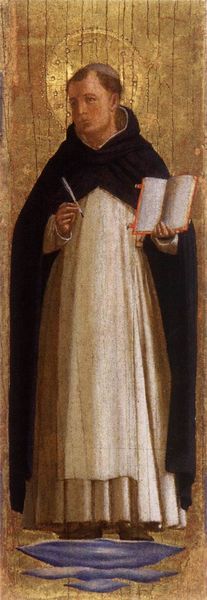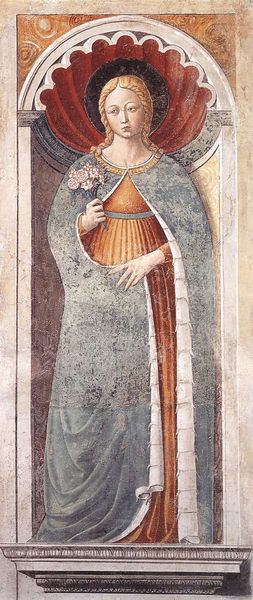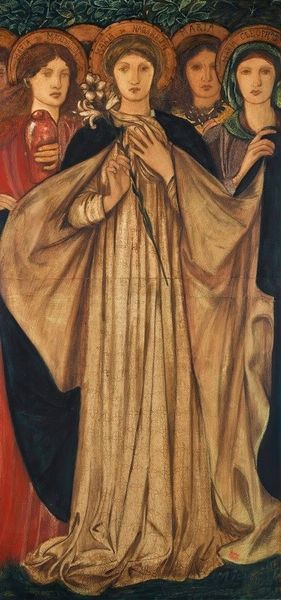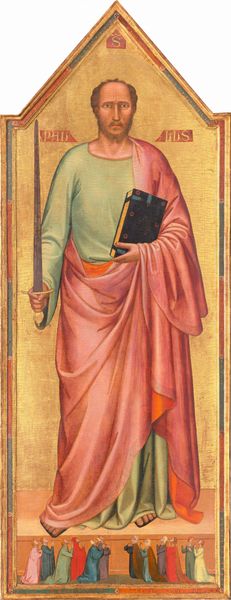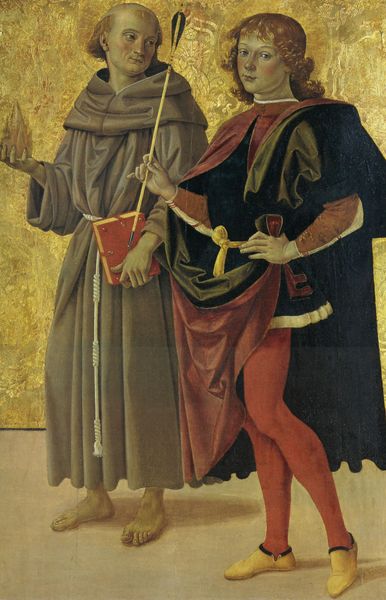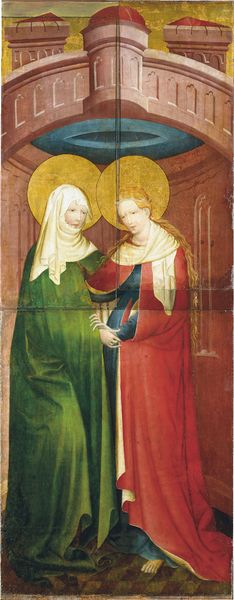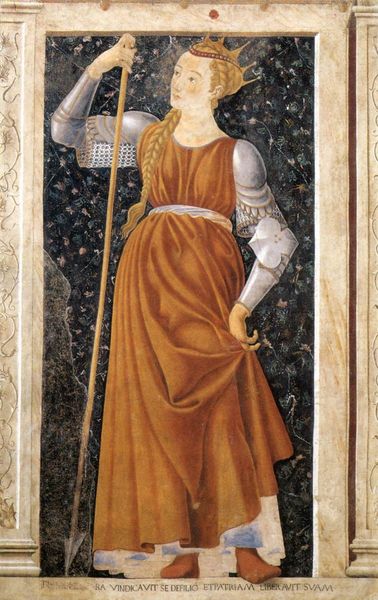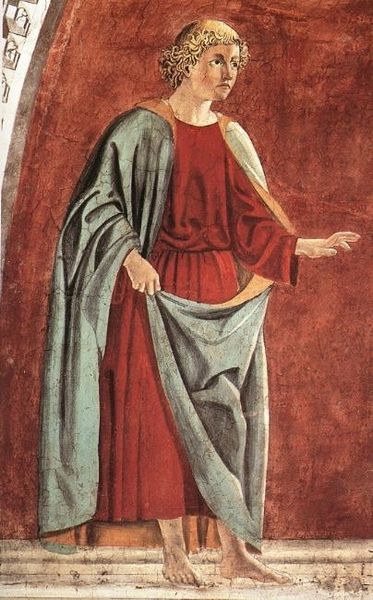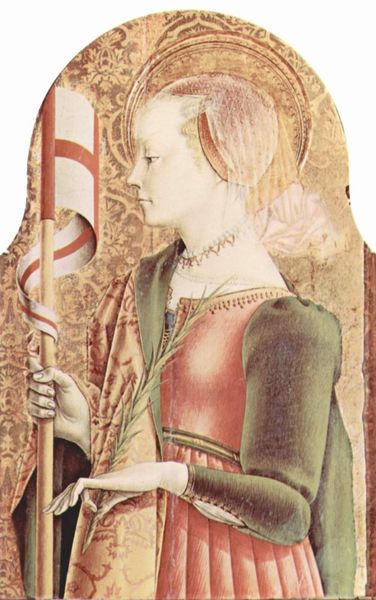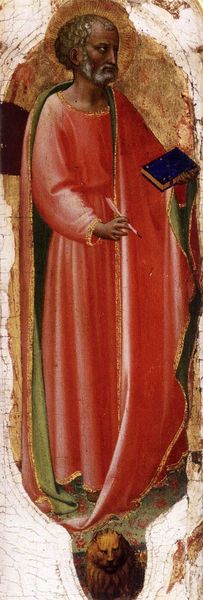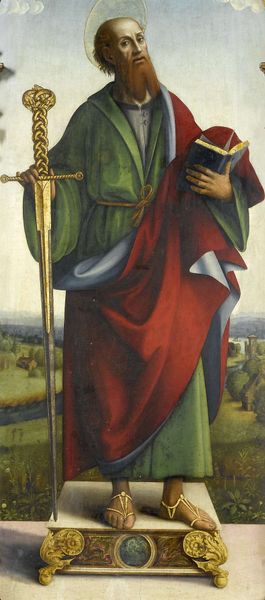
painting, oil-paint
#
painting
#
oil-paint
#
oil painting
#
christianity
#
history-painting
#
italian-renaissance
#
portrait art
Dimensions: 152 x 49 cm
Copyright: Public domain
Curator: Standing before us is "Mary Magdalene," an oil painting crafted around 1490 by the Italian Renaissance artist Carlo Crivelli. Currently, it resides at the Bonnefantenmuseum in Maastricht. Editor: It’s striking. The Magdalene’s elongated figure feels monumental, yet she also possesses a delicate, almost melancholic air. The textures – from the fabric of her dress to the elaborate details on the reliquary she holds – they all invite you to look closely. Curator: Crivelli was a master of surface and material representation. Notice how he renders the richness of her garments, emphasizing the luxurious fabrics available during the Renaissance. Her status, visible through this clothing, certainly impacts our understanding of the painting's social context and its original commissioners. How does her presentation challenge or reinforce existing social structures of that era? Editor: Precisely! The extravagant details signify wealth and power, but considering Mary Magdalene's traditionally complex identity – as a sinner and redeemed woman – Crivelli complicates a simple reading of power. Her beauty and costly apparel are almost in direct conflict with a narrative of penance and devotion. This painting is rife with tensions that illuminate larger patriarchal structures embedded within the Church's and society's representation of female figures. Curator: Furthermore, analyzing Crivelli's studio practices and how he and his assistants executed works such as this piece is relevant here. Did Crivelli meticulously control all elements, or was it more collaborative? The division of labor is critical to understanding both this specific painting, but also Renaissance artistic production more broadly. The work isn’t solely the vision of one 'genius', but a collaborative effort situated within economic constraints. Editor: Yes! It calls into question notions of authorship and artistic genius. Moreover, focusing solely on traditional art historical techniques distracts us from seeing Mary Magdalene's broader historical narrative. This isn't simply a 'beautiful' portrait; it embodies evolving societal ideas around sin, forgiveness, and feminine archetypes. Where do we place Mary within these often restrictive narratives, both past and present? Curator: Absolutely. Crivelli's technique of applying layers upon layers of paint, the sheer detail… these labor-intensive techniques demonstrate artistic craftsmanship which was of significant value at the time. Editor: The tension in "Mary Magdalene" reveals that art acts as both a product of its age and a site where ideologies collide and reshape our own perspectives about power, representation, and complex historical figures. Curator: Considering its production process and societal context, Crivelli's work leaves us with valuable material for future investigations. Editor: A fascinating glimpse into how one woman's legacy embodies not just personal redemption, but the continual push and pull of historical and contemporary interpretations.
Comments
rijksmuseum about 2 years ago
⋮
With Carlo Crivelli, the so-called ‘International Gothic’ style experienced its final flowering in Italy. This perfectly preserved panel was painted towards the end of his career. It served as the altarpiece of a provincial church dedicated to Mary Magdalene in the sparsely populated rural area of the Marches where Crivelli lived.
Join the conversation
Join millions of artists and users on Artera today and experience the ultimate creative platform.
